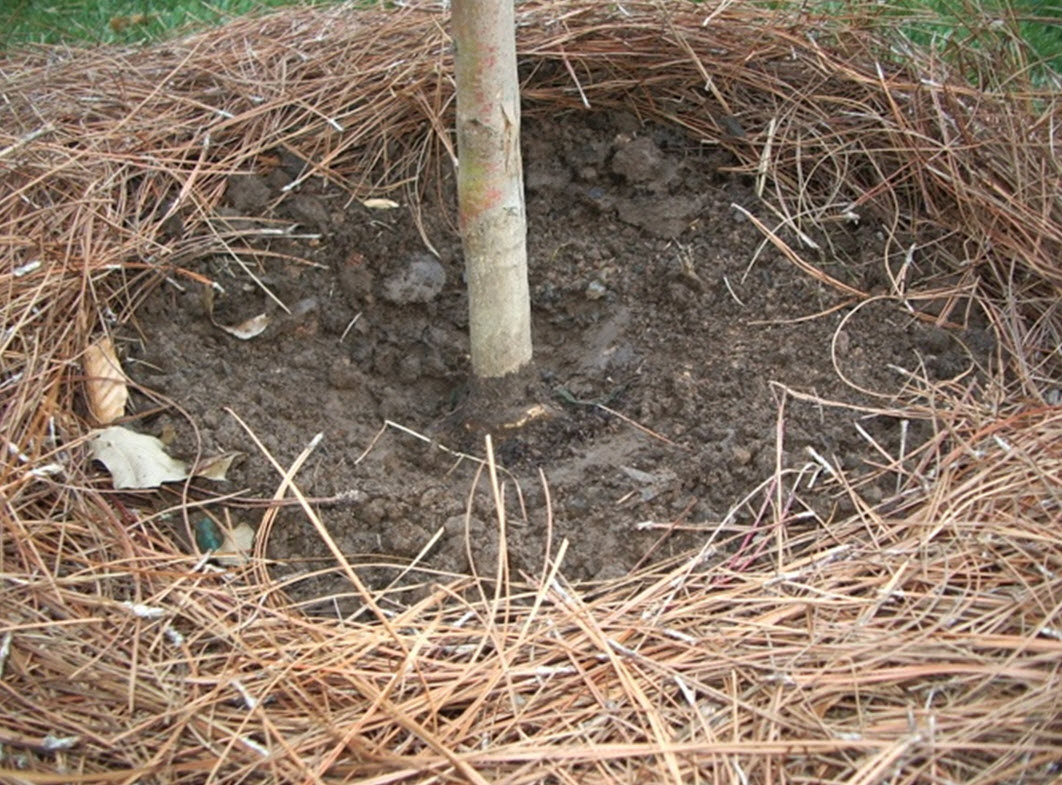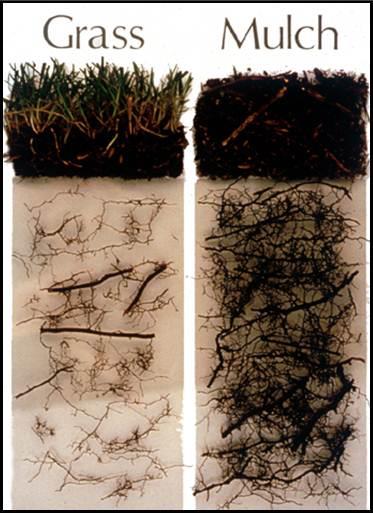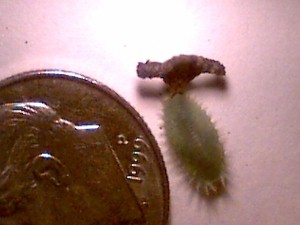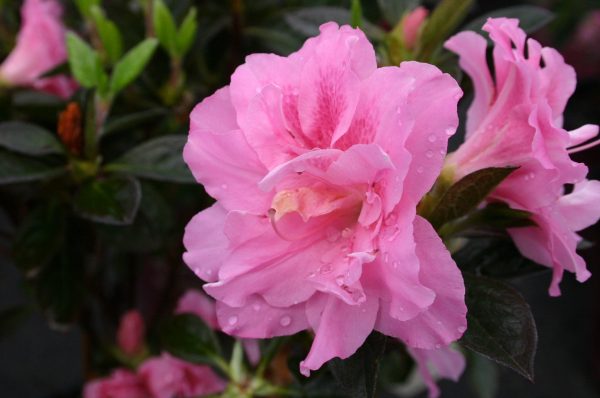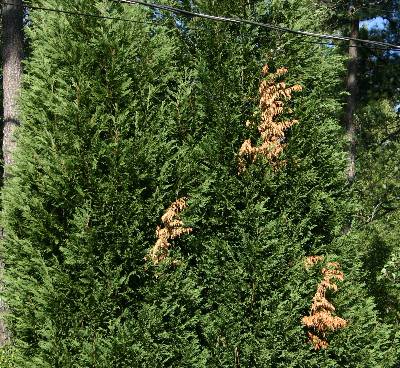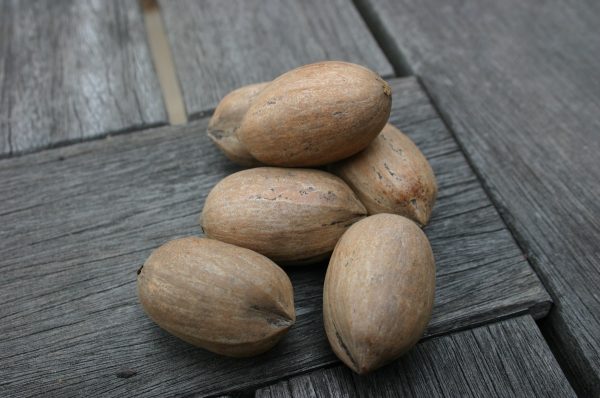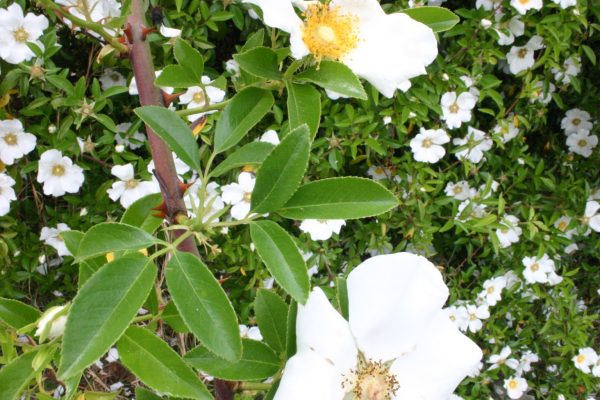How to Mulch Correctly
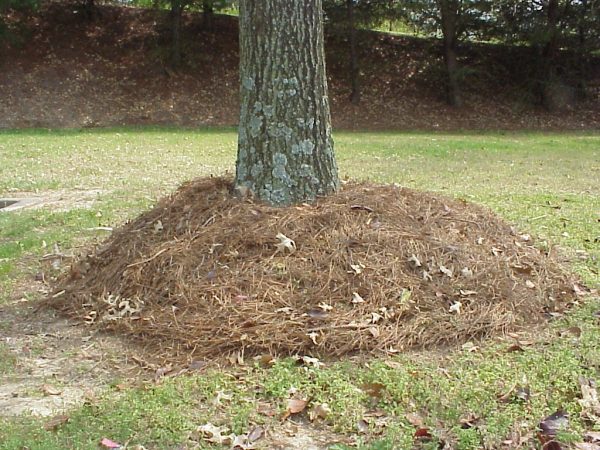
You can’t have a productive,long-lived landscape without mulch.
WHY MULCH? The right mulch in the right place can be a real blessing. It conserves moisture, keeps down weeds, keeps the soil cool and makes your yard more attractive, among other benefits. Mulch simplifies mowing and it keeps string trimmers and lawn mowers away from unprotected tree trunks. Mulch can be the visual “glue” that knits a landscape together.
WHICH MULCH? Pine straw and pine bark are easy to use but there are other options. Ground wood chips make a good mulch, as can shredded leaves, in moderation. I use sections of newspaper, three pages thick, to mulch under my tomatoes to prevent early blight on the leaves.
Each mulch has advantages and disadvantages. Pine straw is attractive but rain tends to wash it downward on moderate slopes. Bark nuggets can also float away in a heavy rain. Shredded cypress wood is slow to rot and clings to the earth but is more expensive than other mulches. Shredded leaves pack down if spread too thickly and newspaper is not very attractive. Chipped wood from a tree removal company makes good mulch for trees and shrubs if it isn’t applied too thickly (no more than two inches thick).
WHERE TO MULCH? The obvious answer is to put the mulch where you need its services. If you want weed control, spread wood and bark mulches two inches thick (or pine straw 3″-4″ thick) on the spot. If you want water savings and cool roots, spread the mulch out to the branch tips of the plant you intend to protect. I repeatedly see tiny islands of mulch surrounding large trees. This may keep the mowers at bay but it does little further good. The feeder roots under and beyond the limbs are what need mulch and drought protection.
TERMITES? Putting mulch up against your home’s foundation can lead to termite infestation. The wood-loving terrors can crawl above the insecticide-treated soil and reach your wood framing unharmed. Pull all mulches away from your foundation at least twelve inches.
Sharp-eyed homeowners sometimes spy dark specks on their siding when wood mulches are spread nearby. The specks are spore masses of artillery fungus, a common decomposer of wood fiber. The masses look like tar spots and are very hard to remove. The fungus grows on pieces of wood and lofts its spores onto any nearby surface. Keeping the mulch surface dry is about all you can do for this problem.
MULCH MISTAKES I don’t know where the practice started, but I see many commercial landscapes that feature “mulch volcanoes” around tree trunks. My guess is that the maintenance crew had nowhere to dispose of their rakings so they began piling them close to any available trunk. This is a terrible situation for the tree because the mulch holds moisture against the trunk. This makes life delightful for fungi which can eat right through the bark and cause tree death. Mulch should never be closer than six inches to a trunk!
It’s important to remember that mulch is not permanent. You can’t just sprinkle a little fresh straw over the same plot every spring. All of the organic mulches decompose wherever they touch the soil. Weed seed will sprout in this layer. The region of decomposed material eventually becomes slimy or hard and it can repel rainfall completely. All mulched areas should be renewed every couple of years by raking out the old material, re-spreading it thinly in place and then covering it with fresh mulch.
MORE INFORMATION
Mulching for a Healthy Landscape
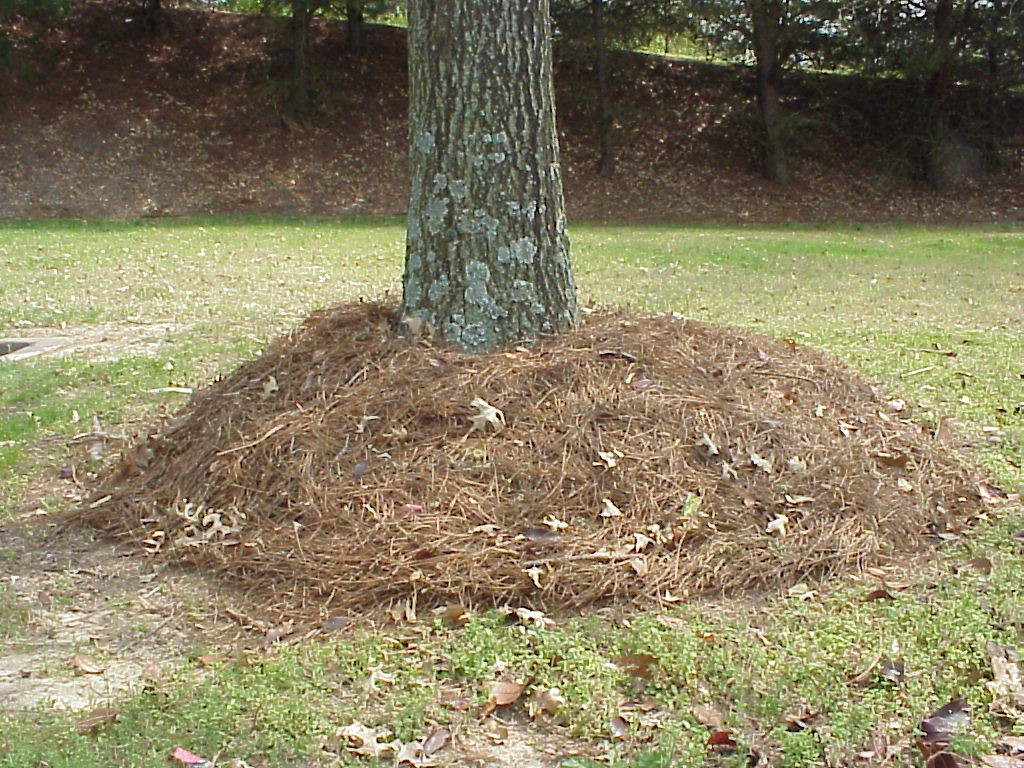
mulch volcano



